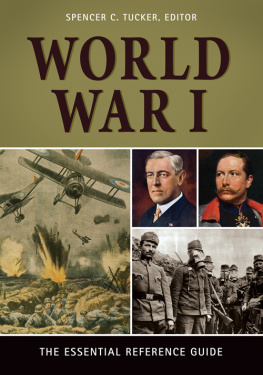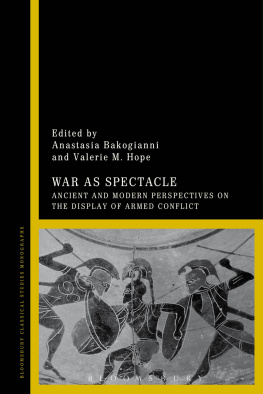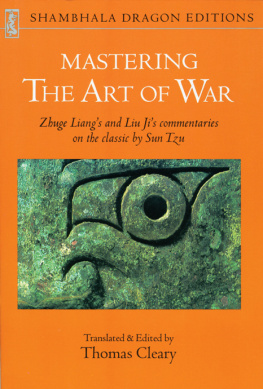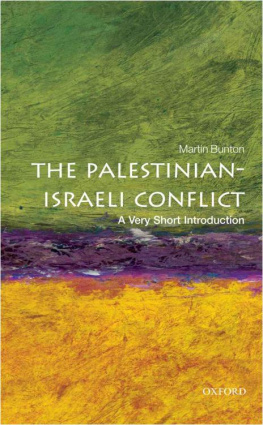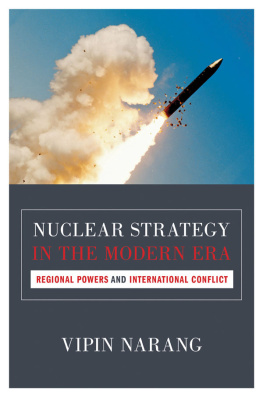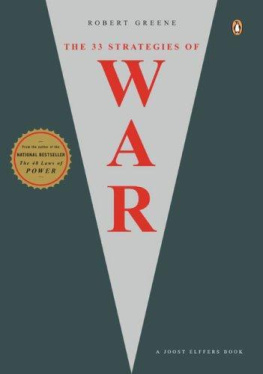Classical Strategies for a Modern World:
the Essence of the Art of War and the Thirty-Six Stratagems
Copyright 2014 by Ryan Coons
Published by Ryan Coons at Smashwords
Smashwords Edition License Notes
This ebook is licensed for your personal use andenjoyment only. This ebook may not be re-sold or given away toother people. If you would like to share this book with anotherperson, please purchase an additional copy; this ebook is modestlypriced and available from most major online retailers.
ACKNOWLEDGEMENTS
The author would like to thank Dr. JosephJohnson of Edinboro University of Pennsylvania for his comments andassistance in the preparation of this ebook.
The author would also like to thank MikeZielinski for designing and creating the cover image.
TABLE OF CONTENTS
OVERVIEW
Like all ofthe Ways, The Way of Strategy cannot be learned through academicstudy; it must be grokked through life experience. Reading a bookon strategy will not make you a strategist. Strategy is an appliedscience; it is a skill, like karate, woodworking, or playing theguitar. Strategy is more than something you read about, it issomething that you do, and to fully understand strategy, it mustbecome a part of you, as you must become a part of it. Like all ofthe Ways, the Way of Strategy is a path that you must ultimatelywalk alone, but there are a few masters who are willing to helppoint the way.
Among the earliest treatises on strategy was The Art of War , by Sun-tzu, an ancientChinese general and royal military advisor -- and that's prettymuch all that is known about him; the rest of the details of when,where -- or even if -- he lived are still the subjects of scholarlydebates. Sun-tzu is generally accepted to have lived from 544-496BCE, making him contemporaneous with Confucius, Pythagoras, and theSpartan king Leonidas I.
Sun-tzu reduced the discussion of warfare intoits most abstract and generalized form, and in doing so, Sun-tzuceased to discuss warfare, per se. Instead, it became a discussionabout the nature of conflict itself. This level of abstraction iswhat gives The Art of War its enduringpower, and it is why it has only gained popularity over the past2,500 years, when countless other books have been forever lost tous due to time and obscurity.
At first, The Art of War sounds like a mere list of military maxims -- something only usefulto the officer candidates in the service academies and universityROTC departments. In reality, The Art ofWar provides a series of general guidelines that are usefulfor anyone who experiences any sort of conflict in their lives --which is to say, everyone. The Art of War contains simple, but timeless, wisdom that can apply to running asmall business, winning a high school football game, and dealingwith cliques of mean girls just as easily as it applies tofistfights, resistance cells, or world wars.
The teachings presented in TheArt of War mesh so well with everyday life in a modern worldbecause, ironically, Sun-tzu advocates non-violence. Case andpoint, most of his chapter on scorched earth tactics was dedicatedto talking the reader out of using scorched earth tactics.According to Sun-tzu, the ideal strategy is to use exhaustiveplanning and preparation to cultivate yourself into a positionwhich is so secure that the enemy has no choice but to surrender.Barring that, you are to wear your enemies out -- both physicallyand spiritually -- to coax them into quitting. Conflict ispresented as being expensive and unproductive. The real goal isnot to fight, but to win. The enemy is not to be destroyed --they are to be assimilated, so you can take their strength and growstronger and stronger. If conflict cannot be avoided, then itshould primarily consist of surgical strikes directed at theenemy's weakest spots.
The Art of War consistsof a series of brief, expository statements, which were laterexpanded upon by various commentators throughout history. Sun-tzu,while profound, can be difficult to understand without the aid ofothers who have already grokked his message. The statements Sun-tzumakes are vague, obtuse, and mysterious -- with good reason -- muchof his book is devoted to the benefits of being formless andmysterious. However, this also makes Sun-tzu difficult to learnfrom. This is why I have not commented on -- or even included --the full text of his work in this ebook. This book is,more-or-less, a "Cliff's Notes" for this ancient text, and a"Schaum's Outlines" for dealing with conflict. I have tried tocapture the distilled essence of the principles Sun-tzu was tryingto teach, and express it in standard English prose, so that it canbe easily read, digested, and grokked by today's modern reader.
A key component to understanding the Way ofStrategy is to understand the use of stratagems. A stratagem isdifferent from a strategy. A strategy is an overall gameplan;whereas a stratagem is just a deception or dirty trick used to gainan advantage. Using a variety of stratagems is part of a larger,overall strategy. Although many readers will initially reject theuse of deception to achieve one's goals, I can guarantee that atleast some of these stratagems will be used against you at somepoint in your life, so ignore them at your peril.
Fortunately, the multitude of possiblestratagems has been distilled, polished, and codified into anotherancient Chinese classic, The Thirty-SixStratagems . The identity of the original author of The Thirty-Six Stratagems is a point ofcontention among sinologists and historians; the answer to whichhas probably been lost to history. The Thirty-SixStratagems are typically attributed to either Sun-tzu, or toZhuge Liang (181-284 CE), a famous general whose exploits werefeatured in The Romance of the ThreeKingdoms . However, even if Sun-tzu never wrote The Thirty-Six Stratagems in ink, then he wrote them inspirit. These stratagems were either directly discussed in The Art of War , or they are immediatederivable from its teachings. The Chinese equivalent to the Englishproverb "he who fights and runs away, lives to fight another day"is "of thirty-six stratagems, retreating is best." ("Thirty-six" isa Chinese colloquialism for "a large number of things," much likehow an English speaker would say "a million.") So, in a bit oftongue-in-cheek humor, the original author of these stratagems madesure that their list contained exactly thirty-six items, and hadretreating be one of them.
The original author of TheThirty-Six Stratagems reduced each teaching down to a singlephrase or proverb, as a mnemonic. Mnemonics were critical topropagate ideas in ancient and medieval societies. When basicliteracy was a luxury reserved for privileged classes, rotememorization had to become the primary method for learning.However, these mnemonics only make sense within the culturalframework in which they were originally created. This, like allconcepts, is best explained by an episode of StarTrek: the Next Generation . In the episode "Darmok," theEnterprise and her crew meet aliens with an entirely metaphor-basedlanguage. Although the crew of the Enterprise was equipped with auniversal translator, it could only produce word salads. ("Theriver Temarc, in winter! Darmok and Jalad at Tanagra!") Although itcould translate the individual words, the universal translatorcould not grasp the overall meaning of the phrases. A Westernreader, who is largely unfamiliar with the Chinese language,culture, history, and literary tradition, would be unable tounderstand that "besiege Wei to rescue Zhao" means "to find theAchilles' heel." Likewise, the average Chinese person, who wasraised in a culture free of idiomatic references to The Iliad , would unable to understand what an Achilles'heel is.
I have attempted to translate the essence ofeach stratagem, to make them easy for a Western reader toimmediately understand, along with a brief explanation of how theyare used. While The Art of War is intendedto be an in-depth study of the nature of conflict itself, The Thirty-Six Stratagems are intended tobe more of a "cheat sheet." The stratagems are organized into adecision tree of "if-then" statements to provide quick responses tosix common situations.



